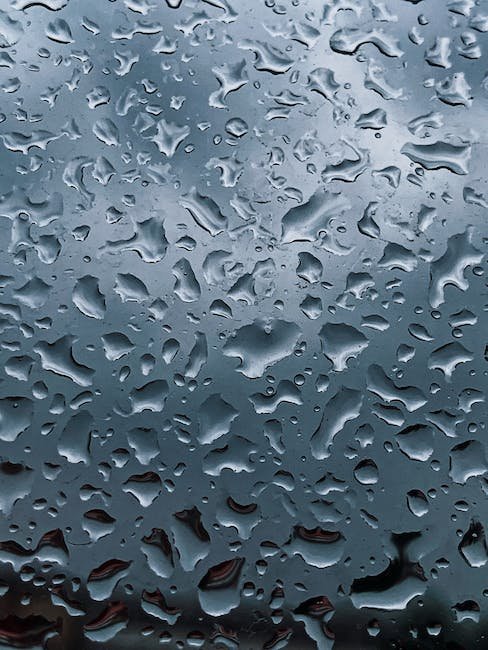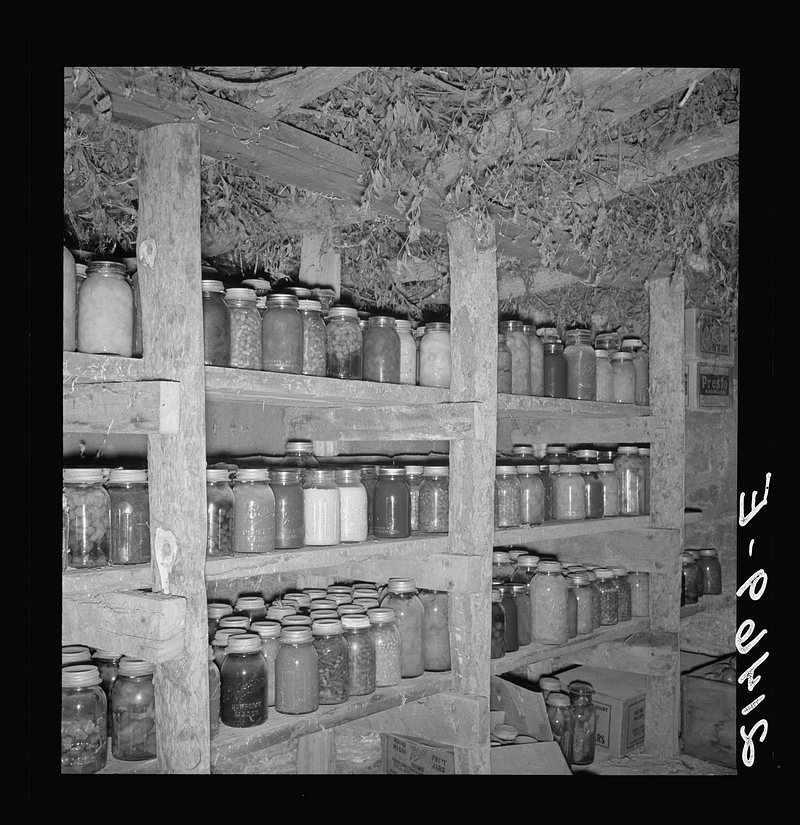Now Reading: The Importance of Water Storage in Urban Areas
-
01
The Importance of Water Storage in Urban Areas

The Importance of Water Storage in Urban Areas
In the bustling heart of urban landscapes, where concrete dominates and buildings soar towards the heavens, a silent hero lies beneath our feet. Unseen and often overlooked, water storage plays a paramount role in ensuring the smooth functioning of modern cities. From quenching our thirst to supplying industries and sustaining an array of ecosystems, the importance of water storage in urban areas cannot be overstated. As arid climates and growing populations exert pressure on water resources worldwide, recognizing the significance of urban water storage and adopting sustainable strategies becomes an essential step towards resilience. In this article, we delve into the intricate reasons why water storage is vital for urban areas, unveiling the remarkable ways it guards against scarcity and nurtures the dynamic life that thrives within our cities.
Table of Contents
- Water Storage: A Vital Resource for Urban Resilience
- Understanding the Growing Need for Water Storage in Urban Areas
- Utilizing Innovative Solutions to Address Water Storage Challenges in Urban Environments
- Recommendations to Enhance Water Storage Infrastructure in Urban Areas
- Promoting Sustainable Water Storage Strategies for Urban Development
- Q&A
- Concluding Remarks

Water Storage: A Vital Resource for Urban Resilience
Ensuring Water Security:
Water storage plays a crucial role in building urban resilience. With ever-increasing urbanization and the unpredictable impacts of climate change, cities must prioritize the development of sustainable water storage systems. Adequate water storage not only supports day-to-day activities but also serves as a lifeline during emergencies such as natural disasters or water scarcity events.
Resilience in Times of Crisis:
Urban resilience relies on multiple factors, and water storage is one of the key components. By having a robust water storage infrastructure, cities can ensure a continuous and reliable water supply even during times of crisis. This allows communities to meet their basic needs, maintain hygiene standards, and provide essential services to their residents.
The Benefits of Efficient Water Storage:
Efficient water storage systems bring numerous advantages to urban areas:
- Enhanced disaster preparedness and response capabilities
- Reduction in water scarcity and increased water security
- Improved ability to withstand prolonged droughts
- Ability to optimize water management and distribution
- Support for sustainable agriculture and food production
- Promotion of environmental conservation and preservation of ecosystems
Investing in water storage solutions and management strategies is not only an investment in the present but also in the future resilience of our cities.

Understanding the Growing Need for Water Storage in Urban Areas
Urban areas worldwide are facing a pressing issue: the growing need for water storage. As cities continue to rapidly expand and the population steadily increases, the demand for clean water rises exponentially. This situation can be attributed to various factors such as climate change, increased pollution, and inefficient water management. To address this critical issue, governments, policymakers, and local communities must understand the reasons behind the growing need for water storage and implement sustainable solutions.
Climate change: The impact of climate change is becoming increasingly evident in urban areas. Extreme weather events, including prolonged droughts and intense rainfall, pose significant challenges to water supply and management. Consequently, exploring ways to capture and store rainwater in urban spaces becomes imperative for sustained access to water resources. Innovative solutions such as rainwater harvesting systems and the creation of rain gardens can help mitigate the effects of climate change and enhance water storage capacities.
Population growth: The relentless growth of urban populations places additional strain on water resources. As more people inhabit cities, the demand for water for various purposes like drinking, sanitation, and industrial activities steadily rises. To meet these increasing demands, it is crucial to consider long-term solutions such as constructing additional reservoirs, implementing efficient water treatment and distribution systems, and promoting awareness regarding water conservation among the population.
Infrastructure development: Rapid urbanization often leads to the destruction of natural water bodies or their encroachment by buildings and roads. As a result, the capacity to naturally replenish water resources diminishes, making it necessary to find alternative storage methods. Constructing artificial lakes, reusing wastewater for non-potable purposes, and creating underground storage tanks are among the innovative solutions that can address the infrastructural challenges and help optimize water storage in urban areas.

Utilizing Innovative Solutions to Address Water Storage Challenges in Urban Environments
Addressing water storage challenges in urban environments requires innovative solutions that can maximize limited space and efficiently collect, store, and distribute water. Urban areas often face constraints such as restricted land availability, high population density, and a growing demand for water. To overcome these challenges, several innovative approaches can be utilized:
- Rooftop Rainwater Harvesting: Utilizing the large surface area of buildings, rainwater can be collected through systems that channel it into storage tanks for future use. This technique helps in reducing reliance on groundwater sources and conserving municipal water resources.
- Underground Water Storage: To make the most of the limited land space in urban areas, innovative solutions involve the construction of underground tanks and reservoirs. These infrastructures enable large-scale storage while minimizing the impact on the urban landscape.
- Smart Water Management Systems: Leveraging advanced technology and data analytics, smart water management systems can optimize water storage and distribution in urban environments. These systems monitor water usage, detect leaks, and regulate supply to ensure efficient use of available resources.
Implementing these innovative solutions: Collaborative efforts between government bodies, urban planners, and environmental agencies are crucial in implementing these innovative solutions. In addition to technical advancements, raising awareness among citizens about the importance of water conservation plays a vital role in ensuring the success of these initiatives. By embracing innovative approaches and utilizing advanced technologies, urban environments can address water storage challenges effectively, paving the way for sustainable water management in the future.
Recommendations to Enhance Water Storage Infrastructure in Urban Areas
Improving water storage infrastructure in urban areas is crucial for sustainable development and the well-being of communities. Here are some recommendations to enhance urban water storage systems:
- Implement Rainwater Harvesting: Encouraging the installation of rainwater harvesting systems in residential and commercial buildings can significantly contribute to water storage. These systems can capture rainwater from rooftops and redirect it to storage tanks, reducing the strain on municipal water supplies.
- Upgrade Existing Storage Facilities: Investing in the modernization and expansion of existing water storage facilities is essential to increase capacity and efficiency. By utilizing advanced technologies and sustainable practices, the storage infrastructure can better handle the demands of growing urban populations.
- Promote Underground Reservoirs: Constructing underground reservoirs can be a highly-effective solution to optimize space in densely populated areas. These reservoirs can store substantial amounts of water while minimizing land use and environmental impact.
- Incentivize Green Roofs: Encouraging the implementation of green roofs, which are covered in vegetation, can help with water storage and management in urban settings. These roofs can absorb rainfall and release it slowly, reducing the burden on drainage systems and retaining the water in the surrounding area.
- Develop Recycled Water Systems: Introducing decentralized recycled water systems can provide an alternative water source for non-potable uses, such as irrigation and industrial processes. Utilizing advanced filtration and treatment methods, recycled water can be safely stored and utilized, reducing the strain on freshwater resources.
By adopting these recommendations, urban areas can enhance their water storage infrastructure, ensure water availability for future generations, and promote sustainable water management practices.
Promoting Sustainable Water Storage Strategies for Urban Development
Urban development has emphasized the need for sustainable water storage strategies to ensure the availability of this precious resource for future generations. Promoting innovative approaches to water storage is essential to address the growing challenges posed by urbanization, population growth, and climate change.
One effective strategy is to implement decentralized rainwater harvesting systems across urban areas. These systems capture rainwater from rooftops and surfaces, reducing the burden on traditional water sources. Additionally, the collected rainwater can be used for non-potable purposes like irrigation, cleaning, and flushing toilets. By incorporating green roofs with rainwater storage capabilities, cities can add aesthetic value and improve water retention, mitigating stormwater runoff.
Furthermore, promoting the use of underground water storage helps optimize urban space while minimizing the effects of water scarcity. Underground reservoirs or cisterns can store a significant amount of water, ensuring a reliable supply during droughts or emergencies. In addition, these storage systems reduce the strain on surface water bodies and enhance groundwater recharge, supporting long-term sustainability of urban ecosystems.
- Incorporate water-sensitive urban design principles to improve water storage capacity.
- Educate communities on the importance of sustainable water storage and its numerous benefits.
- Encourage implementation of water reuse systems to maximize water efficiency and reduce waste.
- Invest in smart water management technologies to optimize water use and storage in urban areas.
By actively promoting these sustainable water storage strategies, cities can work towards achieving water security, enhancing resilience to climate change, and creating a sustainable environment for generations to come.
Q&A
Why is water storage important in urban areas?
Water storage is vital in urban areas to ensure a steady supply of clean water during emergencies or water shortages. It also helps mitigate the impact of extreme weather events and provides resilience against potential disruptions in the water distribution system.
How does water storage benefit urban residents?
With efficient water storage systems, urban residents can have uninterrupted access to water, even during times when the water supply may be compromised. It also helps reduce dependence on external sources, enabling communities to become self-sufficient in times of need.
How does water storage contribute to urban sustainability?
Water storage promotes sustainability by reducing pressure on existing water resources and preventing wastage. This leads to better water management and conservation efforts, allowing urban areas to thrive while minimizing their impact on the environment.
Can you provide examples of water storage in urban areas?
Examples of water storage in urban areas include rooftop rainwater harvesting systems, underground reservoirs, and elevated water storage tanks. These solutions effectively capture and store water, ensuring it is readily available for various purposes.
What are the challenges in implementing water storage systems in urban areas?
Challenges in implementing water storage systems in urban areas include limited space for infrastructure, cost considerations, and coordinating efforts among different stakeholders. However, with proper planning and innovative designs, these challenges can be overcome.
How can water storage help during emergencies or disasters?
During emergencies or disasters, water storage systems act as a lifeline by providing a backup water supply. This helps emergency response teams deliver essential services, supports relief efforts, and ensures the well-being of urban residents when conventional water sources may be disrupted.
Are there any additional benefits to water storage in urban areas?
Yes, water storage in urban areas also offers benefits such as reducing peak water demands, saving energy used for pumping, and improving water quality by reducing sedimentation and the risk of pipe corrosion. Additionally, stored water can serve as a source for irrigation, firefighting, and recreational activities.
Concluding Remarks
As we conclude our journey through the vast importance of water storage in urban areas, let us take a moment to reflect on the significance that lies beneath the surface. Through the lens of creativity, we have explored the undeniable need for strategic water solutions in our ever-growing concrete jungles.
In this neutral tone, we have peered into the depths of this crucial issue, understanding how water scarcity can threaten the very fabric of our urban landscapes. The delicate balance between human needs and environmental preservation has been brought to light, reminding us that the fate of our cities rests in our hands.
We have learned that water storage, like secret underground caverns, acts as a lifeline in times of drought or emergencies, catering to the needs of millions, silently and selflessly. The vast expanse of reservoirs and cisterns keeps our cities afloat, reminding us of the power water holds, waiting to be harnessed for our benefit.
In this creative exploration, we recognize that water storage is not merely a practical endeavor but a poetic symphony. The interplay between technology and nature creates a harmonious melody, where the clinking of pipes intertwines with the gentle murmur of a trickling stream. We are reminded of the delicate dance between innovation and sustainability, where each step forward must be accompanied by the rhythm of conservation.
As we bid farewell to this journey, let us not forget the oath we have taken. It is our collective responsibility, as the caretakers of our cities, to ensure a sustainable future for all. May this article serve as a clarion call for action – a rallying cry to embrace ingenuity and harmony with nature. Our cities, like our souls, can thrive when water storage becomes an inherent part of our urban DNA.
With this understanding, let us venture forth, armed with the knowledge that water storage is not merely a solution, but a testament to our ability to adapt, evolve, and safeguard our cities for generations to come. Together, we can quench the thirst of our urban landscapes and create a legacy of abundance amidst a world desperate for harmony.
So, as we part ways, may the ripple effect of water storage expand far and wide, leaving no urban area untouched by its transformative powers. Let us always remember the importance of water storage, for it is the sustenance that ensures our cities continue to flourish with life’s most precious elixir.
As an affiliate, my content may feature links to products I personally use and recommend. By taking action, like subscribing or making a purchase, you’ll be supporting my work and fueling my taco cravings at the same time. Win-win, right?
Want to read more? Check out our Affiliate Disclosure page.





